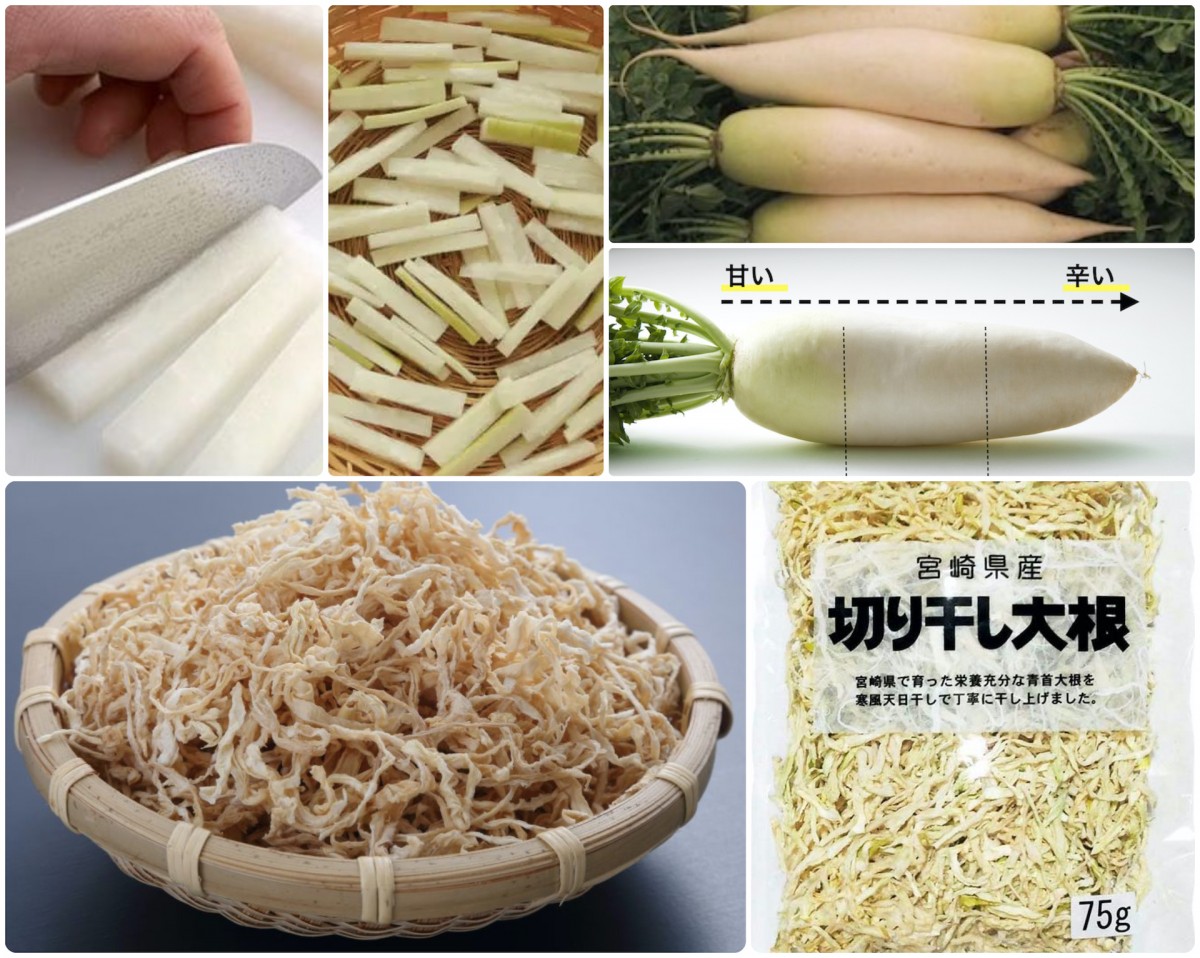Indeed the traditional Japanese pantry is filled with dried things, wrinkled and withered-looking. But these items are robustly flavored and nutrient-dense — as fresh foods dry, their essence is concentrated. And, although kambutsu are old-fashioned, they can become the modern, too-busy-to-get-to-the-grocery-store, cook’s best friend.
One of the most versatile and humbly-priced Japanese kambutsu is kiri-boshi daikon (dried shredded radish). Rich in calcium, potassium, iron, vitamins B and C, and dietary fiber, kiriboshi daikon is a low-calorie nutritional powerhouse.
Available in Asian groceries throughout the world, kiriboshi daikon is shelf-stable with a long shelf life (typically several years). Check the label to be sure the daikon has been naturally dried (tenpi-boshi 天日干し) so that you can use the re-hydrating liquid when cooking — it is a deeply flavored, nutrient-rich stock. No need to make a separate dashi.
Kiriboshi daikon is best stored at (cool) room temperature in a dark, dry place. It is ready to use whenever you want to add another dish to the dinner table.
Visit my KITCHEN CULTURE Blog to learn more about kiriboshi daikon and how to make your own.
Stay connected.
I’m looking forward to your comments on the items I post to my Facebook page!
Follow me on Twitter!
I do hope you like it!
Elizabeth Andoh A Taste of Culture Culinary Arts Program Setagaya-ku, Tokyo 158-0095, Japan


Comments